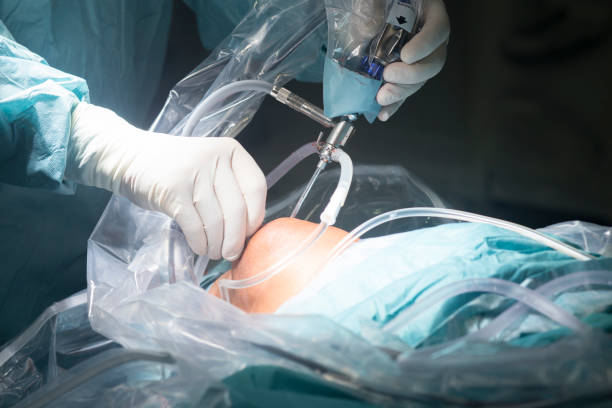
Book your appointment now with NAIR Spine & Knee Clinic because we have Best Minimally Invasive Spine Surgeon in Navi Mumbai. Modern spine procedures have been transformed by the development of minimally invasive methods to the spine, much as other surgical subspecialties have done so in order to approach disorders. Spine doctors can now limit collateral damage while yet accomplishing the same objectives as open surgery thanks to modern minimally invasive surgery (MIS) techniques. Surgeons can avoid a lengthy incision and significant muscle dissection by employing MIS methods. Reducing tissue damage can lead to faster recovery, less discomfort during surgery, less blood loss, and a shorter hospital stay. According to a number of imaging, biomechanical, and laboratory investigations, MIS techniques lessen paraspinal muscle atrophy and enable a greater degree of preservation of normal spinal motion.
Conditions affecting the spine that result in severe pain or neurological problems are among those that qualify for minimally invasive spine surgery, or MISS. Typical signs include:
1. A herniated disc : When a disc puts pressure on the spinal nerves, producing discomfort, weakness, or numbness.
2. Stenosis of the Spine : Spinal canal narrowing, which causes discomfort and nerve compression.
3. Discoid Degeneration : Back pain that is persistent due to worn-out discs.
4. Brain Tumors : To remove spinal tumors that are squeezing it.
5. Stiffness in the Spine : Spondylolisthesis is one of the conditions that needs stabilization.
6. Breaks in the Spine : frequently brought on by osteoporosis or trauma.
To ascertain the precise position and nature of the spinal condition, the patient is put through preoperative examinations that include imaging procedures such as CT or MRI scans. Depending on the type of surgery, either local or general anesthetic is used. Therfore get in touch with us because we have Best Minimally Invasive Spine Surgeon in Navi Mumbai.
MISS usually involves one or more small incisions, usually less than an inch long, in place of major incisions. In order to minimize harm to muscle and tissue, a tubular retractor is placed through these incisions to establish a passage to the spine.
The tubular retractor is used to insert specialty surgical instruments. These instruments aid the surgeon in precisely navigating and visualizing the spinal structures, in conjunction with a high-definition camera or fluoroscopy. By taking this action, the nearby muscles, tissues, and nerves are protected. We have the Best Minimally Invasive Spine Surgeon in Navi Mumbai.
a) Microdiscectomy: sections of a herniated disc are removed to reduce strain on the nerves.
b) Fusion of the spine: utilizing rods, screws, or bone grafts to fuse vertebrae in order to stabilize the spine.
c) Laminectomy: section of the vertebra removed to release pressure on the nerves or spinal cord.
d) Phoplasty: treating fractures by injecting bone cement into the vertebrae.
Following the procedure, the retractor is taken out, and surgical glue or sutures are used to close the incision. Because the process is less intrusive, there is less pain and minimum scarring, allowing for a faster recovery.
Visit to NAIR Spine & Knee Clinic now because we have Best Minimally Invasive Spine Surgeon in Navi Mumbai An important development in spinal care is minimally invasive spine surgery, which provides an efficient and safer substitute for open surgery. Surgeons may now treat difficult spinal disorders with smaller incisions because to state-of-the-art equipment and procedures, which minimizes trauma, scarring, and recovery time. Minimally invasive spine surgery has many advantages, such as shorter hospital stays, reduced blood loss, and a lower risk of infection. Patients can resume their regular activities sooner and have less discomfort following surgery. Minimally invasive techniques also improve long-term results and lessen the need for revision surgery with increased accuracy and precision. Minimally invasive spine surgery is changing the field as technology advances, giving people with spinal problems hope and enhancing quality of life.